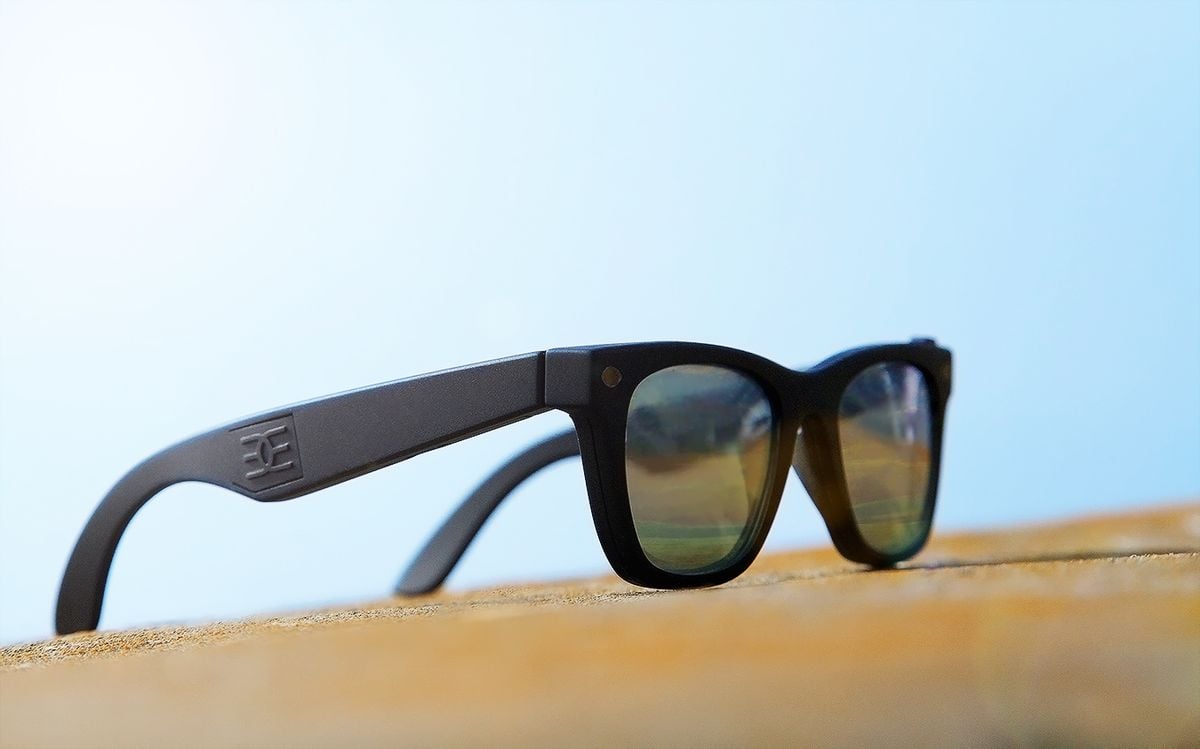The History of Sunglasses
What is - arguably - the must-have travel accessory no matter where you go in the world, we’ll forgive you if you’ve always just thought of sunglasses as a modern-day fashion find. But there is so much more to them than meets the, ahem, eye. Ready to look through the lens with us?

So … how did you celebrate National Sunglasses Day yesterday? What do you mean you didn’t know? What is - arguably - the must-have travel accessory no matter where you go in the world, we’ll forgive you if you’ve always just thought of them as a modern-day fashion find (no shade, promise!). But there is so much more to them than meets the, ahem, eye. Ready to look through the lens with us? Right this way as we discover the evolution of sunglasses.
Let’s start at the beginning
Believe it or not, sunglasses can be traced back to ancient times. Prehistorically, The Inuit wore ‘sun goggles’ made from either flattened walrus ivory or carved driftwood with tiny slits to block the sun’s rays, reflecting off the snow's bright white. This is based on discovered artifacts and modern research has proven them to be quite effective (if not particularly fashionable - unless you were a prehistoric Inuit.). But it was not until the 12th century - possibly even a bit earlier - that the first usage of sunglasses in both China and Rome was recorded.
Made from flat panes of smoke-tinted quartz, they offered neither sight correction nor protection from harmful UV rays. They did, however, minimize the glare from sunlight. And how’s this for a fun fact: Ancient documents describe the use of such sunglasses by judges in ancient Chinese courts to hide their expressions when interrogating witnesses to remain impartial! The Roman emperor, Nero, was also said to watch gladiator fights through polished gemstones (only the best for old Nero, hey?). These arguably remain the most expensive and ineffective sunglasses of all time (but who’s counting?).
Early opticians
English optician and designer, James Ayscough, started experimenting with tinted lenses in glasses in the mid-1700s. While protection from the sun was not a concern at this time, he was steadfast in the belief that blue or green-tinted glass could potentially improve poor eyesight. Ayscough is - to this day - credited with being a major pioneer in the world of sunglasses - even though he was unaware at the time that tinted lenses could also offer protection from the sun. Not long after, in the early 19th century, Sir David Brewster (inventor of the telescope!) discovered the use of polarized light. This theory paved the way for the polarized sunglasses we have today.
Italian style
The first tinted glasses specifically made for sun protection were worn in Venice in the late 18th century. They were known as Goldoni Glasses, named after the playwright Carlo Goldoni who popularized the style, and were primarily used by the gondoliers who spent their days on the sunny canals of the city.
Going mainstream
From the early 20th century, yellow, amber and brown-tinted glasses were commonly prescribed for people with pre-existing diseases that made them sensitive to light. It was around this time, too, that they started to become more widespread - particularly in the world of Hollywood - primarily to help keep their identity hidden but also as a way to protect their eyes from the bright lights of the studio and flash-happy cameras. But - as we know - it doesn’t take long for a celebrity endorsement to catch on among the masses, and thanks to adverts featuring A-listers in their sunnies, sales were bolstered.
Sunglasses were finally seen as multi-faceted - both for protective and aesthetic purposes - but their popularization can be attributed to Sam Foster (of Foster Grant), a savvy Austrian businessman who sold the first-ever pair intended for mass market on the beaches of Atlantic City in 1929. Inexpensive and mass-produced, sunglasses would never be the same again. Somewhat tellingly, a 1938 article in Life Magazine reported that although 20 million pairs of sunglasses had been sold in 1937, only 25% of people wore them for protection.
Winning wars
Aviators remain one of the most popular styles of sunglasses today, but they were actually created for - and played a significant role - in World War II, by - yup, you’ve guessed it, a Mr. Ray Ban (with the help of optical giants Bausch & Lomb) who had airline pilots in mind with his vision-enhancing, anti-glare solution in 1936 (using the polarization theory from our earlier friend, Sir David Brewster and Edwin Land, founder of Polaroid Corporation and the first-ever polarized sunglasses!). It took just one more year for the sunglasses to be sold to the public and the rest, as they say, is history!
Today
Interestingly, not all that much has changed in the eternal life of sunglasses; we still use them to block the sun and look fabulous while doing so! After all, they may look worlds apart from the sunglasses first worn by Chinese judges, but a huge part of the allure is still in the air of mystery they enable the wearer! However, it is now widely understood that damage from ultraviolet rays can lead to severe eye problems, which is why UV protection is now an industry-standard in most places globally.
Sunglasses are not just a coveted accessory but a necessity. So, where will you take yours this summer?
